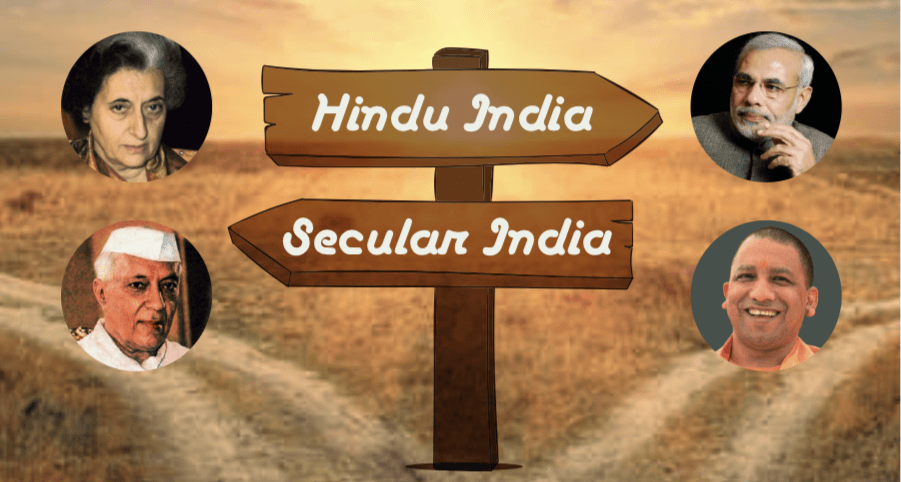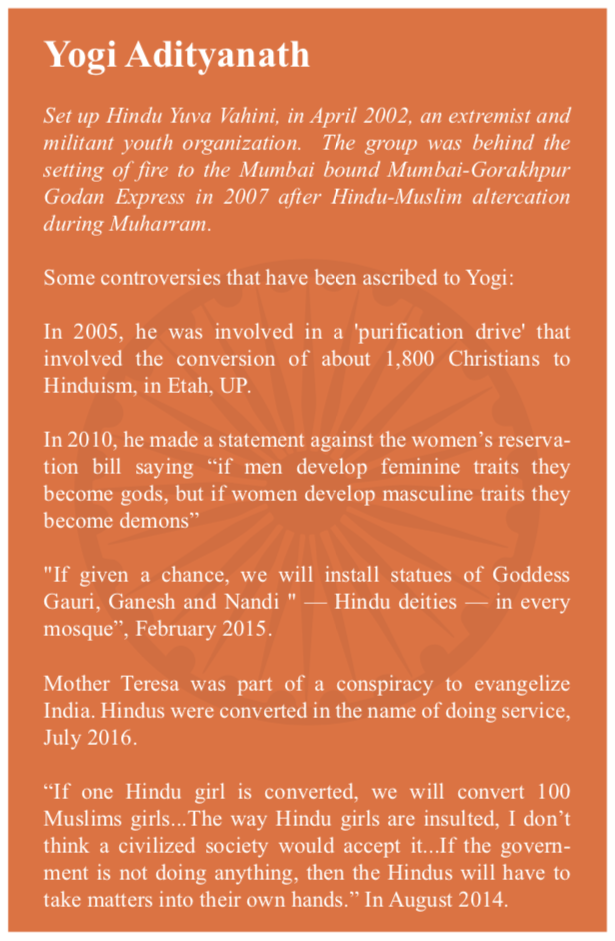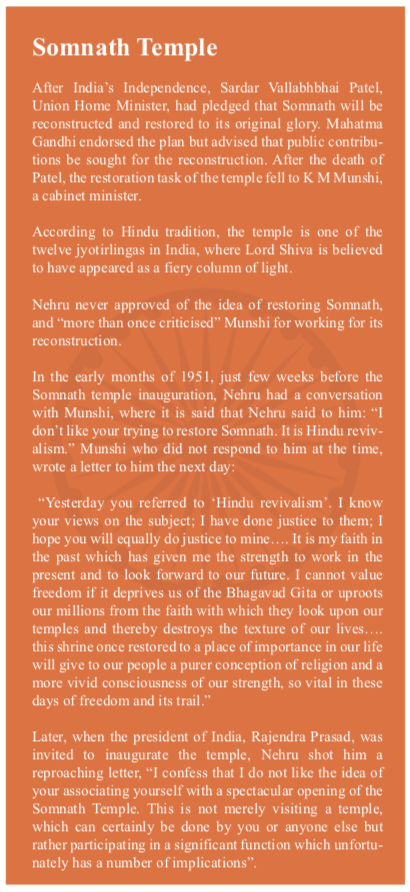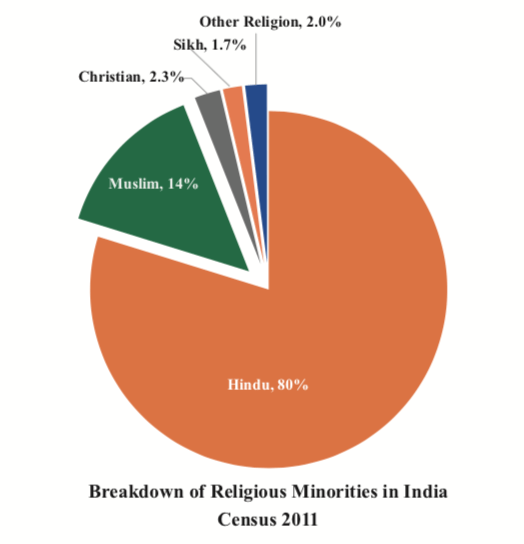Inaugurating a newly built dam in 1954, India’s first Prime Minister Jawaharlal Nehru christened it as the “temple of modern India”. Nehru, as the architect of modern India, was clear right from the beginning which direction the nascent nation has to go.
Leaving behind the bitter memory of partition and the subsequent bloodbath between Hindus and Muslims, Nehru wanted to steer India towards a secular path and, thereby, kept religion out of the politics of the state.
When the question of the restoration of the ancient Indian temple, Somnath in Gujarat, came to his cabinet in his early days [1951], he refused to give it state funding and passed the responsibility to a private trust to rebuild the place of worship. It is this idea of India that is under threat today. The dam is no longer the symbol of modern India.

Democracy in India is becoming a prisoner of temple and Hinduism, the majoritarian religion. Nehru is the most hated person in the eyes of the ruling party today. The new ruling dispensation is systematically trying to downplay his contribution to building the nation.
The dam is no longer the symbol of modern India. Democracy in India is becoming a prisoner of temple and Hinduism, the majoritarian religion.
Narendra Modi’s ascension to power in 2014 broke two myths of independent India- first, no divisive figure can become the Prime Minister of India, and, second, a rabid Hindu majoritarian party cannot acquire an absolute majority in this multi-religious country. The majoritarian takeover of the country is no longer a lurking danger it is now a reality.
Read More: Secularism in decline in India’s ‘so-called democracy’
Modi sought votes in the name of economic development and the overwhelming majority of the masses; sick and tired of the previous Congress government’s corruption and economic malfeasance decided to trust him and his words, and put aside the skepticism about his divisive agenda.
Therefore, 2014 can be termed as a turning point in India’s history. For the first time, India got a blatantly divisive leader as the Prime Minister of the country, who does not pretend to be secular. Furthermore, for the first time, a party got a majority in the Lower House of the Indian parliament, which does not have a single member from the minority community in its fold.
The skeptics, however, turned out to be right. The agenda of the BJP, as was feared, is not economic development but to create a Hindu majoritarian state in India. By appointing Yogi Adityanath as the Chief Minister of Uttar Pradesh, Modi again proved his critics right.
His appointment as the head of the biggest state of India, equivalent to the United Kingdom in size and with a population of over 200 million, is another nail on the Nehruvian and secular India. A religious head with a blind bias against Muslims and other non- Hindu faiths, becoming the chief of such a crucial state in India, is an undeclared war on religious minorities.

It delivers a major blow to the state’s neutrality towards religion. When India launched the nation-building project in the 1940s, immediately after independence, there was a great emphasis to take everyone along together regardless of one’s religious affiliations. The intent was to give Muslims and other minorities a sense of security and make them equal stakeholders in shaping the newly independent nation.
Read more: RSS man absconds when bomb making equipment discovered at his house
Who are these fringe groups?
The Congress leader also wanted to counter the two-nation theory and they wanted to make a point that India is not a land of Hindus but it’s an idea where all faiths can exist together. This idea took root despite the opposition and continuous onslaught by the fringe Hindu groups. However, the fringe is now the mainstream.
When India was in the middle of a freedom struggle a group of Hindus came together and formed Rashtriya Swayamsevak Sangh (RSS) in 1925, under the leadership of Keshav Baliram Hedgewar, who believed that the cultural and religious heritage of Hindus should be the basis of Indian nationhood.
A religious head with a blind bias against Muslims and other non- Hindu faiths, becoming the chief of such a crucial state in India, is an undeclared war on religious minorities.
With this aim in mind, the RSS started organizing the Hindu community and endorsed the idea of militarizing society in accordance with fascist organizations, that were being run at that time by Hitler in Germany and Mussolini in Italy. They never participated in the anti-imperialist struggle and always sought favors from the British.
A British intelligence report in 1933 states that the RSS “hopes to be in future India what the fascists are to Italy and the Nazis to Germany”. The organization started getting some traction in the 1940s when large-scale Hindu-Muslim riots took place. Historical accounts blame them to be involved in perpetuating religious violence in communally sensitive areas during those days.
The RSS always opposed the Congress’ inclusive politics and hated Mohandas Karamchand Gandhi or Mahatma Gandhi for taking the cause of Muslims. This hatred towards Gandhi, christened Father of the Nation, culminated when one of the guys influenced and trained in the RSS, killed Gandhi in January 1948, initiating the first political murder in independent India. The Nehru government banned the organization for its divisive agenda after Gandhi’s assassination.
Read more: Why RSS members are being killed in Indian Punjab?
Bhartiya Jan Sangh (BJS)
In 1951, the RSS created the Bhartiya Jan Sangh (Indian People’s Group), under the leadership of Shayam Prasad Mukherjee, as a political front. Its idea of nation-building meant nationalizing all non-Hindus in India by inculcating what the group called “Indian culture”.
The BJS was bitterly opposed to Article 370 of the constitution, which gave Jammu and Kashmir a special status. In the 1952 general elections, the party won three seats. They remained a fringe group and could not capture the popular imagination. In 1980 BJS became the BJP and in the 1984 general elections, the BJP only got two seats showing their political marginalization at that time.
The party’s big moment came in 1977 when it became part of the first non-Congress coalition government and some of its biggest leaders Atal Behari Vajpayee and L K Advani became ministers. However, the experiment could not last as the coalition of the rightwing and the socialist and left parties could not reconcile their ideological contradictions.
They create the fear of a Muslim takeover of the country. One favorite theme is using anti-Pakistan propaganda and linking Indian Muslims with Pakistan.
In the 1989 general elections, however, the BJP fought together with Janata Dal under the leadership of V P Singh and became part of the government after defeating the Congress regime. However, the coalition collapsed within two years. To recapture, the political momentum the party started temple agitation movements in the late 1980s, this catapulted the Hindu majoritarian party into the national consciousness.

Under the leadership of Advani, a hardcore Hindutva leader, the BJP launched a campaign to build a temple for Hindu God, Ram, at the site of Babri mosque in Ayodhya, a sleepy town in eastern UP. The party claimed that the existing mosque was built by the Mughal ruler Babar in the 16th century by demolishing a temple that was the birthplace of Ram.
Read more: RSS affiliated journalist killing sparks fear of social discord in India
The agitation galvanized the masses and polarized Indian society. This divisive project brought the right-wing party to the center stage of the Indian polity. In 1992 the mosque was demolished by the cadres of the BJP, RSS, and other Hindu organizations. In 1998 for the first time, the BJP captured power in Delhi in alliance with the regional parties. In 2004 it lost power to Congress.
Mixing Religion with Politics for Electoral Success
In its march to power, the Hindu party has always been playing with the anger and anxiety of the majority Hindu community. They create the fear of a Muslim takeover of the country. One favorite theme is using anti-Pakistan propaganda and linking Indian Muslims with Pakistan and, thereby, create an impression that the way Islamic republic is working against India so are the Indian Muslims; who derive their sustenance from the western neighbor.
Through this, they create doubts in the minds of the majority community about Muslim loyalty among the masses. By nurturing this anxiety the RSS/BJP want to unite Hindus into one political pantheon. Modi played this fear as the Chief Minister of Gujarat since 2001 and remained in power.
Mishra further adds that “the cleaning of rootless cosmopolitans is crucial to realizing Modi’s vision in which India, once known as “golden bird”, will “rise again” and become a “world guru”. Modi taps into the anger of the middle class who feel frustrated by India’s failure to be a great power and failure of the new liberal economy to address jobless growth and chronic poverty.
Modi taps into the anger of the middle class who feel frustrated by India’s failure to be a great power and failure of the new liberal economy to address jobless growth and chronic poverty.
Author Pankaj Mishra says people like Modi succeed not only because of the religious polarization but also by tapping into the subterranean anger of lower-middle-class Hindus who feel let down in the global march to greatness. In the book, “Age of Anger”, he calls this “ressentiment”, which is “an existential resentment of other people, caused by an intense mix of envy and sense of humiliation and powerlessness, ressentiment, as it lingers and deepens, poisons civil society and undermines political liberty, and is presently making for a global turn to authoritarianism and toxic form of chauvinism”.
Read More: Are Hindu women being radicalized by RSS?
“Modi positioned himself in the gap that a democracy dominated by liberal elite had opened between itself and ambitious lower-middle-class Hindus”, says Mishra. Since 2014, he has been playing that game trying to position himself as the only savior of the country and the only leader, who has brought India at the center stage of world politics. A section of the media and civil society promotes this narrative.
Today you have dedicated TV channels, like Republic TV, Times Now, Zee News, News X- which have large urban viewership batting for the vision that Modi espouses for India. Most of the media houses are now owned by big corporate houses, who are hardcore supporters of Modi.
Former journalists and editors, like M J Akbar, Swapan Dasgupta, and others have played an important role in giving legitimacy to Modi and his project. Pakistan understands the consequences of this majoritarian project. By giving primacy to sectarian politics, one cedes greater power in the hands of fundamentalist forces, who in order to retain their dominance keep on creating internal enemies, like Shia, Ahmadiyya, Christian, and Hindus.
Jinnah envisioned a nation where people of all faiths have equal rights and space. The mainstreaming of politics of religion shrinks the scope of free political debate and makes religious minorities outsiders. A section of the civil society and media supported this kind of politics, declaring anyone who questioned them as anti-Islamic, thereby, worthy to be eliminated.

This also led to the radicalization of a section of the majority community. Today Pakistan is struggling to reoccupy the space it ceded to fundamentalist forces. India under Narendra Modi stares the same future. Some commentators have already started calling India a Hindu Pakistan.
Read More: Is India living up to its claim of being the world’s greatest democracy?
Adityanath, a political and ideological protege of Modi, now openly says that “Hindutva and development are the same things; those who oppose Hindutva are against development; those who are against Hindutva are against the nation”.
Today India is in the grip of Hinduphobia and you invite certain death or punishment by radicals Hindus if you question the political hindutva of the ruling party.
This kind of political narrative propounded by the ruling party gives political impunity to cow vigilantism, who indulge in open attacks on Muslims in the name of protection of cows. They now look similar to Pakistan’s blasphemy laws. They can get away by doing anything in the name of protecting Hinduism.
Since 2014 many attacks have taken place on Muslims in the name of cow protection, meat-eating, “love jihad” but no conviction has taken place. Mohammad Akhlaq was killed just outside Delhi in 2015 on the ground of storing beef in his refrigerator but all the accused in that case have been released and subsequently rewarded.
Any secular protest is sidelined or attacked and there is a concerted attempt to make liberal and secular ideologies redundant. Today India is in the grip of Hinduphobia and you invite certain death or punishment by radicals Hindus if you question the political Hindutva of the ruling party.
It’s not only Muslims that are in siege; other minorities like Christians too feel this existential crisis. Recently in a national colloquium of Catholic missionaries in Calcutta, several speakers expressed concerns about the curtailment of the minority rights granted in the constitution. Father George Thadathil said, “we have a right to be present and that very right is being challenged.”
Read more: Hindutva group tries to justify cow protection movement
Former Principal of Delhi’s prestigious St Stephen’s College said, “we are passing through a stage when we need to be extremely circumspect. We can’t afford to stay static. We have to be cautious about the challenges. And we must understand our greatest challenge is to survive”.
Liberal universities are a special target as they challenge and question religious bigotry. An environment is being created in which any challenge to Hinduism and the BJP’s definition of a nation is termed anti-national. What is worrying is the saffronisation or Hinduization of government bodies and educational institutions.
The Indian Council of Historical Research (ICHR), an important body tasked to write history, is now headed by a rabid RSS man tasked to rewrite history. The aim is to establish India historically as a Hindu nation and prove Muslims as an alien. Maintaining a strident stand against Pakistan is also part of this Hindutva narrative that buttresses the government’s nationalistic rhetoric.
At a time when a closed and conservative country like, Saudi Arabia, is reforming itself and intends to adopt liberal ways of life, India is going in the opposite direction. But there is a big question mark whether people are buying the BJP’s narrative or not.
Read More: Time magazine editor pens scathing note on Indian PM Modi
Will India really become a Hindu Pakistan?
One needs to keep in mind that the BJP got only 31% vote in the 2014 elections. The overwhelming majority of the country is still not ready to welcome the BJP. It was the fragmentation of opposition votes which helped the right-wing to assume power with an absolute majority.
Liberal and secular sections are well entrenched in society and they still command respect and recognition. Youngsters chose Modi for his developmental narrative. However, his majoritarian project has not been welcomed by the new generation. The defeat of the BJP’s youth wing in different university elections across India indicates the reaction of the youth against the onslaught on liberal and secular values of India.
Read More: Babri Mosque case: Indian courts are no longer immune to Hindutva frenzy
Whether BJP’s march towards Hindutva can be stopped depends on the success of the Congress party to wrest the political initiative. One reason why the BJP advocates Congress-free India is that the Grand Old Party of India offers a secular and softer Hindutva umbrella to people.
India is on the cusp of change. Will Indian democracy turn into a majoritarian state: it is too early to say. But the present political trend is a worrisome sign not only for the stability of India but also for the whole region.
Sanjay Kumar is a New Delhi-based journalist covering national and international politics with a special focus on South Asia. He has been associated with ANI TV, the German public broadcaster, ARD First German TV, The Diplomat, Express Tribune, and Dawn and has appeared on TV in Pakistan. He has extensively traveled in different conflict zones in the region, with Afghanistan being his special area of interest.
The views expressed in this article are author’s own and do not necessarily reflect the editorial policy of GVS.
